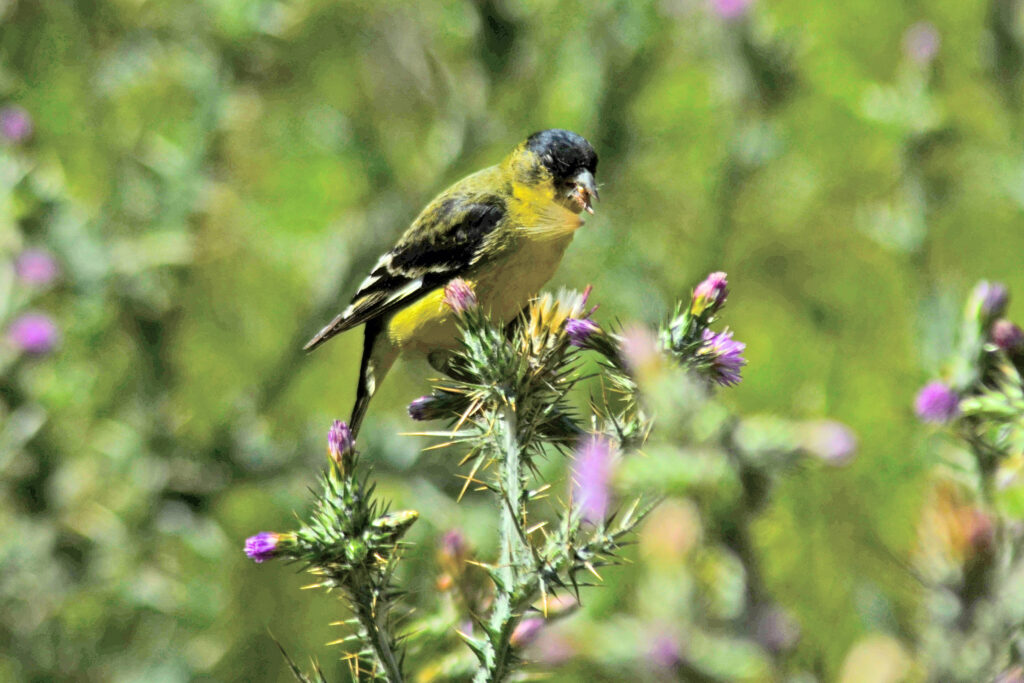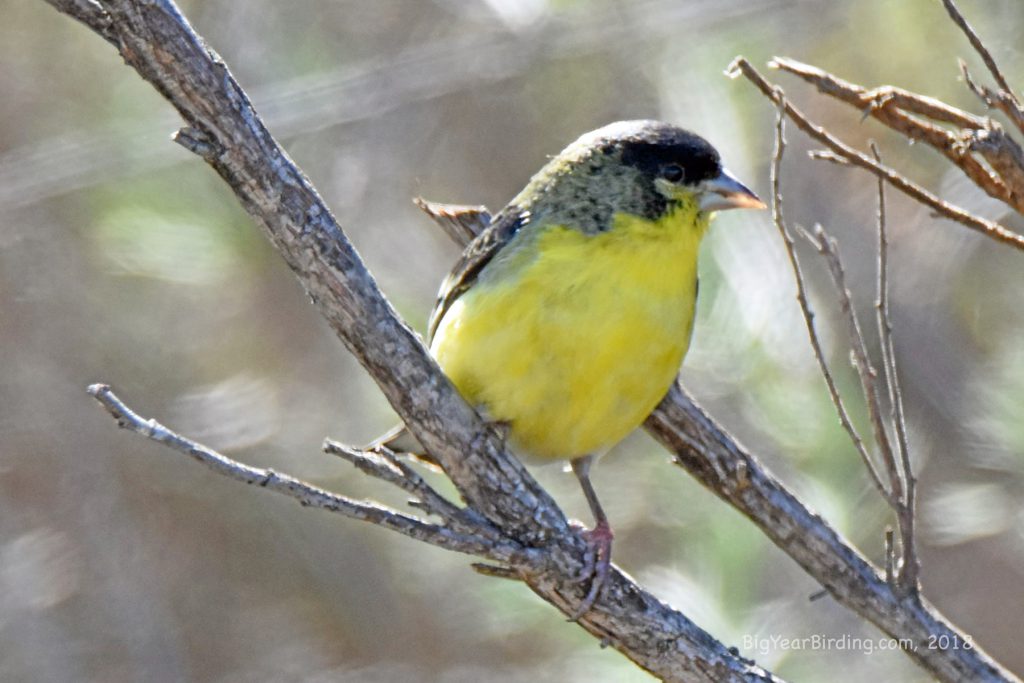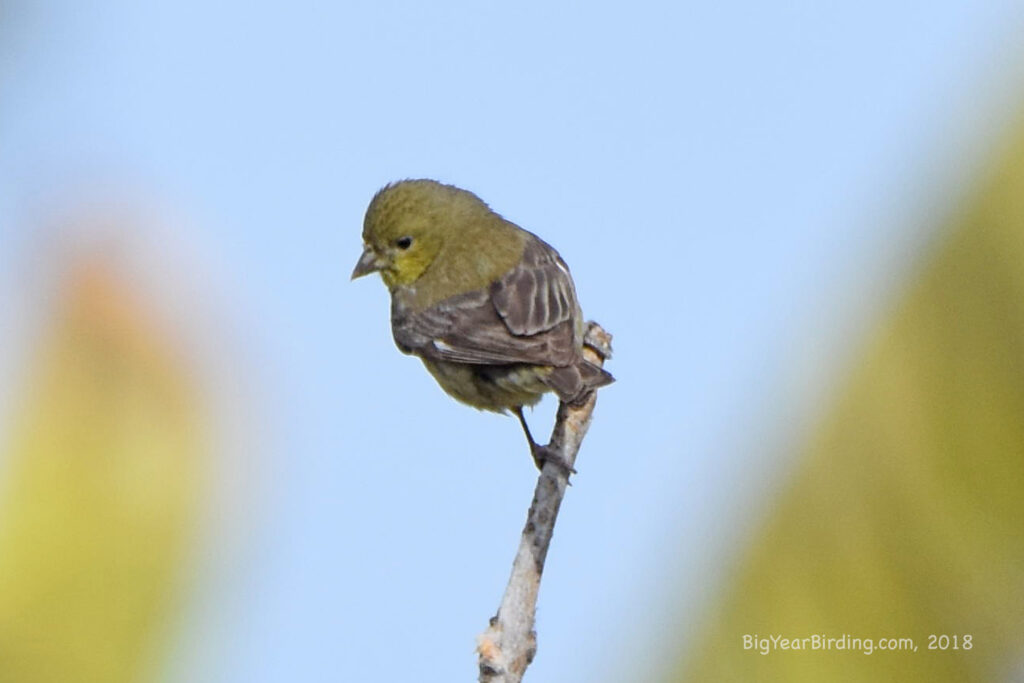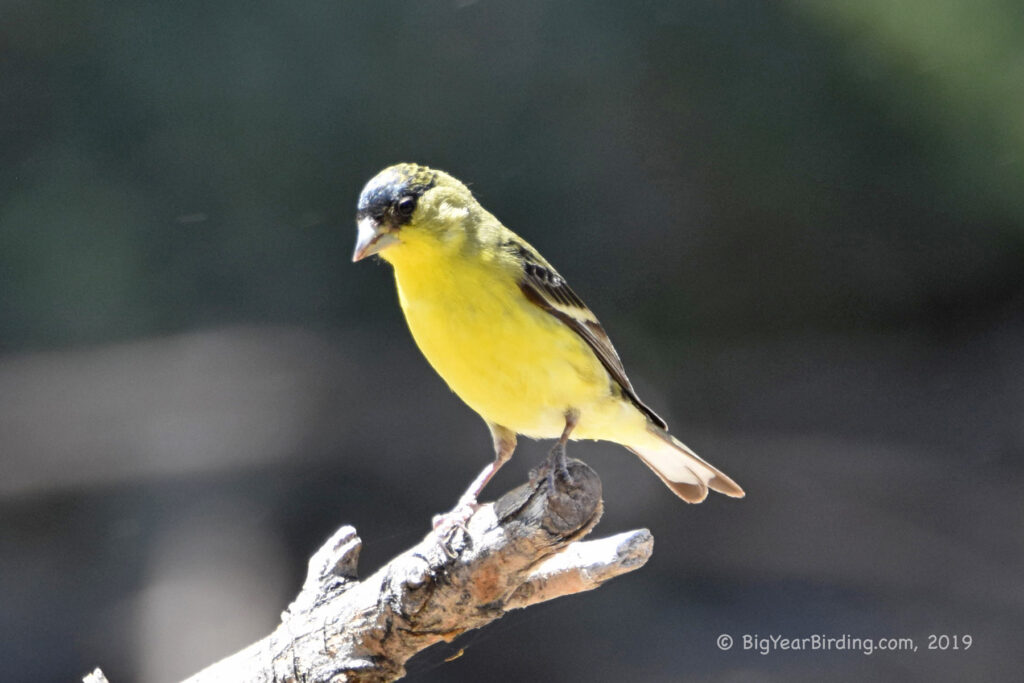
The Lesser Goldfinch is a small, colorful bird that can be found throughout the western United States and Mexico. Adults typically measure between 4.25 and 4.75 inches in length, with a wingspan of approximately 7.5 inches. They weigh between 0.3 and 0.4 ounces, making them one of the smallest birds in their range. The males have bright yellow underparts and black backs, while the females have olive-green backs and yellow underparts. Both sexes have black wings with white wing bars and a black cap.

One of the most distinguishing field marks of the Lesser Goldfinch is its bright yellow underparts. This coloration sets it apart from other finch species in its range, including the American Goldfinch, which has a more muted yellow color on its underparts. Another distinguishing feature is the black cap on the bird’s head, which contrasts sharply with its yellow face. The black wings with white wing bars are also a helpful field mark, as are the yellow undertail coverts.
The Lesser Goldfinch is a non-migratory species, meaning that it stays in its range throughout the year. In the summer, it can be found in a variety of habitats, including open woodlands, scrublands, and urban areas. During the winter, it tends to stick to more sheltered areas, such as riparian zones and dense thickets. In some areas, the species may move to slightly lower elevations during the winter months.
In addition to its striking appearance, the Lesser Goldfinch is known for its cheerful, tinkling song. The males are particularly vocal during the breeding season, when they use their songs to attract mates and establish territories. The species is also notable for its adaptability, as it can thrive in a range of habitats and is able to utilize a variety of food sources, including seeds, insects, and fruit.

Overall, the Lesser Goldfinch is a delightful bird that is sure to brighten up any birding excursion with its vibrant colors and lively personality. Its small size and distinctive field marks make it easy to identify, and its cheerful song is sure to bring a smile to any bird lover’s face.

